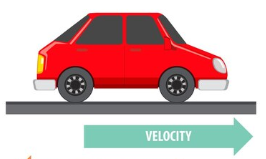Kerb weight is frequently mentioned as a crucial but misinterpreted term when talking about vehicle specifications. It directly impacts performance, fuel economy, and even safety, so it’s more than just a number. However, a lot of drivers fail to recognize its importance.

Explaining Kerb Weight: The Real Story Behind the Figures
The weight of a car with all of its necessary fluids—oil, coolant, transmission fluid, and a nearly full fuel tank—is known as kerb weight. It does not, however, include passengers, luggage, or optional accessories, so actual weight may be significantly increased under actual driving circumstances.
Different Kerb Weight Types: Dissecting the Conventions
Different kerb weight measurements exist. There is frequently confusion because different manufacturers and geographical areas adhere to different standards.
| Kerb Weight Type | Definition | What’s Included? |
|---|---|---|
| DIN Kerb Weight | Standard in Germany and widely used across Europe. | Essential fluids + 90% full fuel tank. |
| EU Kerb Weight | Required by European emissions tests. | DIN Kerb Weight + 75kg (driver & luggage estimate). |
| Dry Kerb Weight | Used in marketing to make cars seem lighter. | Excludes all fluids (sometimes partially included). |
Every measurement has a distinct function. While EU kerb weight represents more realistic driving conditions, DIN kerb weight serves as a baseline. Conversely, dry kerb weight frequently produces false impressions.
What Makes Kerb Weight Important?
Drivers can make better decisions regarding the efficiency and performance of their vehicles by knowing the kerb weight. It affects your driving experience in the following ways:
- Efficiency of Fuel
Fuel consumption is higher for heavier vehicles, particularly in stop-and-go traffic. Over time, mileage can be significantly impacted by even a 50 kg increase.
- Execution & Management
Increased kerb weight affects cornering stability, braking, and acceleration. While heavier cars have better grip but need longer stopping distances, lighter cars feel more nimble.
- Capacity to Tow
Understanding the kerb weight is crucial when transporting trailers or large loads. Overloading can put stress on the suspension, brakes, and engine.
- Safety Points to Remember
Because of their momentum, heavier cars typically perform better in collisions, but they also need more braking force to stop.
Example from the Real World: How Optional Extras Increase Weight
Although many purchasers believe that the kerb weight stays the same, optional features can add surprisingly large weights. Examine a family sedan that is mid-sized and weighs 1,500 kg at the DIN kerb.
| Component | Additional Weight |
|---|---|
| Upgraded sound system | +20kg |
| Sunroof | +15kg |
| Larger alloy wheels | +10kg |
| Automatic transmission | +40kg |
| Driver & passenger | +147kg |
| Weekend luggage | +30kg |
| Full fuel tank | +70kg |
| Total Real-World Weight | 1,832kg |
When fully loaded, a car that is advertised as weighing 1,500 kg may actually weigh more than 1,800 kg. Performance, handling, and even fuel efficiency are all greatly impacted by this.
What Is the Difference Between Kerb Weight and Gross Weight?
Kerb weight and gross vehicle weight (GVW) are frequently confused. The latter encompasses everyone inside the vehicle, including passengers and cargo. GVW is the maximum weight that a car can safely support, whereas kerb weight indicates the weight of the car when it is ready to drive.
How to Determine the Kerb Weight of Your Vehicle
You can prevent overloading your car by being aware of its kerb weight. The simplest methods to locate it are:
✔ Owner’s Manual: This is where manufacturers provide official weight measurements.
✔ Vehicle Identification Plate: Located beneath the hood or on the door frame.
✔ Manufacturer’s Website: Multiple weight categories are frequently included in official online specifications.
Why You Should Pay Attention to Kerb Weight
Anyone who wishes to drive effectively, safely, and responsibly needs to understand kerb weight; it’s not just for auto enthusiasts. Considering kerb weight can have a significant impact on performance optimization or the selection of a new car.
By applying this information to your decision-making, you’ll not only drive more intelligently but also optimize fuel economy, improve safety, and guarantee that your vehicle operates at its peak in everyday situations. Haha, 🚗
